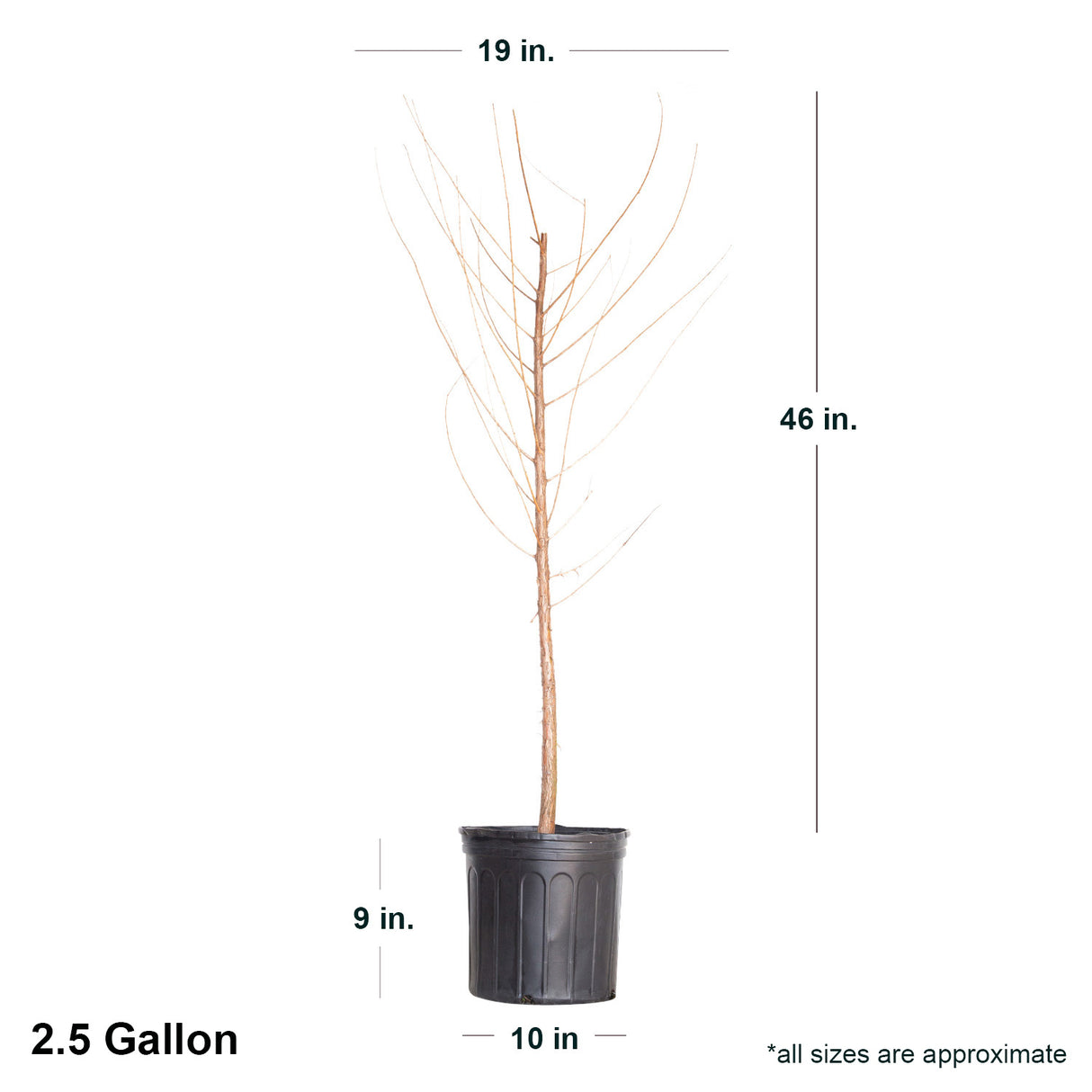Bald Cypress Tree
Bald Cypress Tree - 2.4 Gallon is backordered and will ship as soon as it is back in stock.
Couldn't load pickup availability
Description
Description
The bald cypress tree is a deciduous conifer tree that has long, drooping branches and is often found in wetland areas. The bald cypress isn't bald at all - the name comes from the fact that it appears to be bald because of its flat needles.
Each fall, these needles turn a beautiful coppery bronze before dropping. They can also be great warning signals for the health of the tree. If your bald cypress starts turning copper in the spring or summer, this could be a sign of a thirsty or stressed tree. Water regularly, mulch around the base of the tree, and fertilize each spring with a slow-release fertilizer to keep your tree growing strong and your needles green!
When your cypress tree loses its needles, it gets a chance to showcase the reddish-gray bark. This bark forms long scaly, fibrous ridges on the trunk as it matures. As it gets older, these ridges will peel off the trunk in strips. Like crape myrtles, this is not a cause for concern, but a natural shedding process of a healthy tree.
Bald Cypress is mostly located in swampy areas with little sunlight, but they are just as viable near ponds, creeks, or anywhere you need a large ornamental tree that wildlife love!
The bald cypress is a slow grower but a creeping giant! At maturity, they can reach heights in excess of 65 feet. As they get larger, the trunks of the bald cypress flare and knobby roots protrude from the ground around it.
If your tree is over 46" inches tall at the time of shipping, we will have to trim it to fit into our boxes.
Customers Outside of the Southeastern United States: Shipping these trees over long distances during the Summer is not recommended, please wait to order during Fall to Early Spring for best results.
Bald Cypress Tree Care
- Hardy from USDA Zones 4-10.
- Plant in Full Sun to Part Shade for best results.
- Bald Cypresses are tolerant of most soil types, even clay.
- Water 2-3 times per week after planting. This will help it to develop deep roots and allow it to support rapid growth.
- Fertilize new plantings in early spring with a balanced nitrogen-rich fertilizer to promote new growth.
Care & Use
Care & Use
Spacing Recommendations
Spacing Recommendations
-
Scientific Name
-
Hardiness Zone4, 5, 6, 7, 8, 9, 10
-
Sun ExposureFull Sun to Part Shade
-
Evergreen or DeciduousDeciduous
-
FeaturesAttracts Birds / Butterflies, Fast Growth
-
Feature ColorGreen
-
UsesAccent, Privacy Planting, Specimen, Woodland Garden
-
Water NeedsMedium
-
Bloom SeasonNone
Growing Zones : 4, 5, 6, 7, 8, 9, and 10











